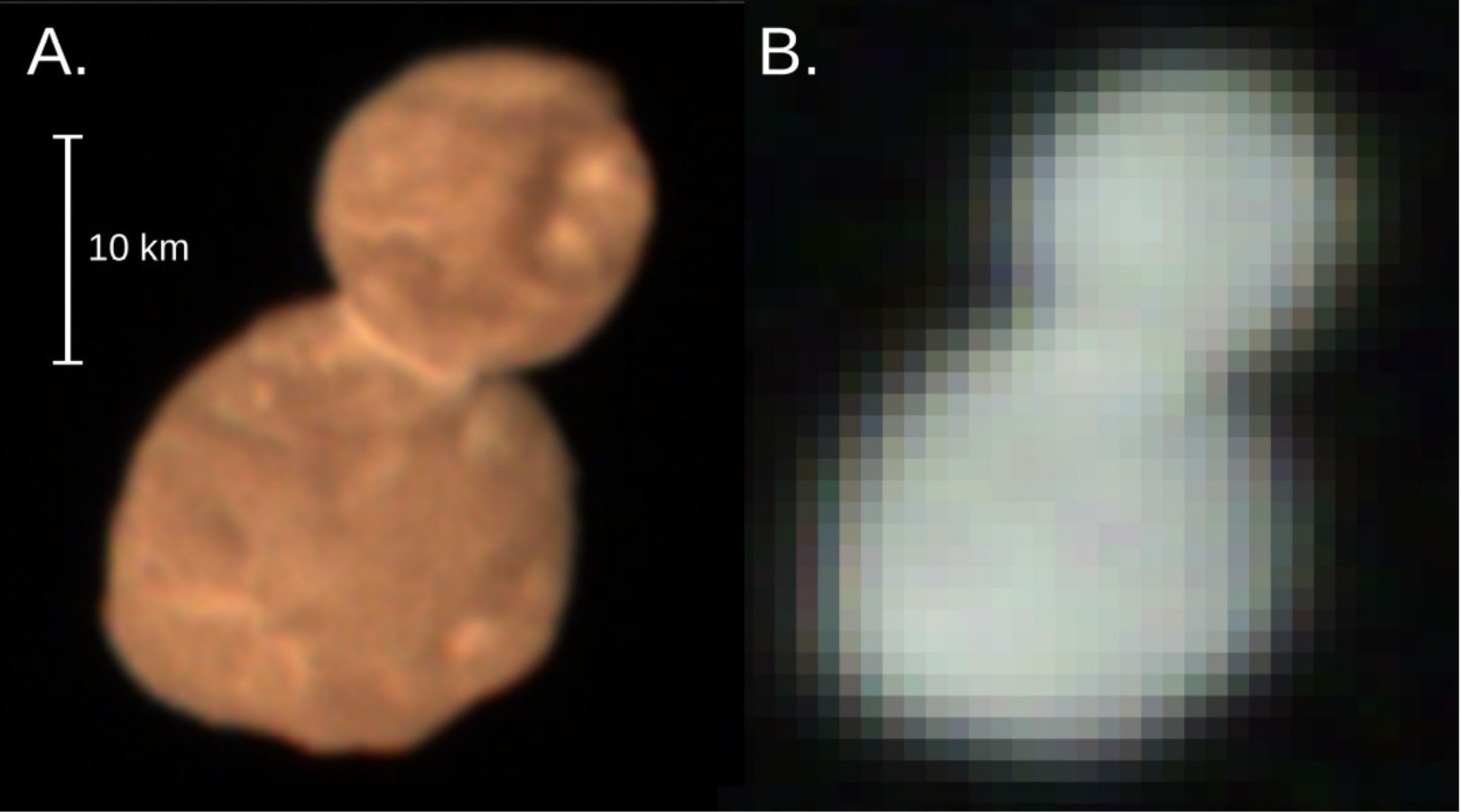
Color, Composition, and Thermal Environment of Kuiper Belt Object (486958) Arrokoth
Published in 2020 in Science DOI:10.1126/science.aay3705
W.M. Grundy1,2, M.K. Bird3,4, D.T. Britt5, J.C. Cook6, D.P. Cruikshank7, C.J.A. Howett8, S. Krijt9, I.R. Linscott10, C.B. Olkin8, A.H. Parker8, S. Protopapa8, M. Ruaud7, O.M. Umurhan7,11, L.A. Young8, C.M. Dalle Ore7,11, J.J. Kavelaars12,13, J.T. Keane14, Y.J. Pendleton7, S.B. Porter8, F. Scipioni7,11, J.R. Spencer8, S.A. Stern8, A.J. Verbiscer15, H.A. Weaver16, R.P. Binzel17, M.W. Buie8, B.J. Buratti18, A. Cheng16, A.M. Earle17, H.A. Elliott19, L. Gabasova20, G.R. Gladstone19, M.E. Hill16, M. Horanyi21, D.E. Jennings22, A.W. Lunsford22, D.J. McComas23, W.B. McKinnon24, R.L. McNutt Jr.16, J.M. Moore7, J.W. Parker8, E. Quirico20, D.C. Reuter22, P.M. Schenk25, B. Schmitt20, M.R. Showalter11, K.N. Singer8, G.E. Weigle II26, and A.M. Zangari8
(1) Lowell Observatory, Flagstaff AZ USA.
(2) Northern Arizona University, Flagstaff AZ.
(3) Argelander-Institut für Astronomie, University of Bonn, Bonn Germany.
(4) Rheinisches Institut für Umweltforschung, Universität zu Köln, Cologne Germany.
(5) University of Central Florida, Orlando FL USA.
(6) Pinhead Institute, Telluride CO USA.
(7) NASA Ames Research Center, Moffett Field CA USA.
(8) Southwest Research Institute, Boulder CO.
(9) Hubble Fellow, Steward Observatory, University of Arizona, Tucson AZ USA.
(10) Stanford University, Stanford CA USA.
(11) Carl Sagan Center, SETI Institute, Mountain View CA USA.
(12) National Research Council, Victoria BC Canada.
(13) Department of Physics and Astronomy, University of Victoria, Victoria BC Canada.
(14) California Institute of Technology, Pasadena CA USA.
(15) University of Virginia, Charlottesville VA USA.
(16) Johns Hopkins University Applied Physics Laboratory, Laurel MD USA.
(17) Massachusetts Institute of Technology, Cambridge MA USA.
(18) NASA Jet Propulsion Laboratory, La Cañada Flintridge CA USA.
(19) Southwest Research Institute, San Antonio TX USA.
(20) Institut de Planétologie et d'Astrophysique de Grenoble, Centre National de la Recherche Scientifique, Université Grenoble Alpes, Grenoble France
(21) University of Colorado, Boulder CO USA.
(22) NASA Goddard Space Flight Center, Greenbelt MD USA.
(23) Princeton University, Princeton NJ USA.
(24) Washington University of St. Louis, St. Louis MO USA.
(25) Lunar and Planetary Institute, Houston TX USA.
(26) Big Head Endian LLC, Leawood KS USA.
Abstract
The outer Solar System object (486958) Arrokoth (provisional designation 2014 MU69) has been largely undisturbed since its formation. We study its surface composition using data collected by the New Horizons spacecraft. Methanol ice is present along with organic material, which may have formed through radiation of simple molecules. Water ice was not detected. This composition indicates hydrogenation of carbon monoxide-rich ice and/ or energetic processing of methane condensed on water ice grains in the cold, outer edge of the early Solar System. There are only small regional variations in color and spectra across the surface, suggesting Arrokoth formed from a homogeneous or well-mixed reservoir of solids. Microwave thermal emission from the winter night side is consistent with a mean brightness temperature of 29±5 K.

Visible and near-infrared wavelength views of Arrokoth. (A) Blue, green, and red channels show wavelengths 0.40 to 0.55 μm, 0.54 to 0.70 μm, and 0.78 to 0.98 μm, respectively. (B) These channels show wavelengths 1.2 to 1.6 μm, 1.6 to 2.0 μm, and 2.0 to 2.5 μm, respectively.